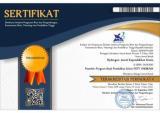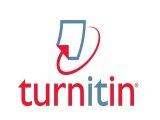Content Structure Analysis of Merdeka Curriculum on Chemical Equilibrium Topic in F Phase
DOI:
https://doi.org/10.33394/hjkk.v11i5.9066Keywords:
Merdeka curriculum, content structure analysis, model of educational reconstruction (MER), chemical equilibriumAbstract
References
Agusta, I. (2003). Teknik Pengumpulan dan Analisis Data Kualitatif.
Anderson, L. W., & Krathwohl, D. R. (2014). Kerangka Landasan untuk Pembelajaran, Pengajaran, dan Asesmen Revisi Taksonomi Pendidikan Bloom (I). Pustaka Pelajar.
Anggraheni, A. (2014). Implementasi Karakter Peduli Sosial dan Gotong Royong Dalam Komunitas di Rumah Susun (Rusun). 2013–2015.
Bahri, S. (2017). Pengembangan Kurikulum Dasar dan Tujuannya. Jurnal Ilmiah Islam Futura, 11(1), 15. https://doi.org/10.22373/jiif.v11i1.61
Brady, J. E., & Jespersen, N. D. (2012). Chemistry: The Molecular Nature of Matter (Sixth edit).
Duit, R., Gropengieber, H., Kattmann, U., Komorek, M., & Parchmann, I. (2012). The Model of Educational Reconstruction – a Framework for Improving Teaching and Learning Science. https://doi.org/10.13140/2.1.2848.6720
Duit, R., & Tesch, M. (2010). On The Role of The Experiment in Science Teaching and Learning – Visions and The Reality of Instructional Practice. 17–30.
Dyer, J., Gregersen, H., & Christensen, C. (2019). DNA Sang Inovator, Diperbarui, dengan Kata Pengantar Baru: Menguasai Lima Keterampilan Inovator Disruptive.
Huda, N. (2017). Manajemen Pengembangan Kurikulum. Al-Tanzim : Jurnal Manajemen Pendidikan Islam, 1(2), 52–75. https://doi.org/10.33650/al-tanzim.v1i2.113
Indriani, A., Suryadharma, I. B., & Yahmin , Y. (2017). Identifikasi Kesulitan Peserta Didik dalam Memahami Kesetimbangan Kimia. J-PEK (JurnalPembelajaranKimia), 2(1), 9–13.
Jaspersen, Brady, & Hyslop. (2004). Chemistry the Molecular Nature of Matter (Issue 1).
Makbul, M. (2021). Metode Pengumpulan Data dan Instrumen Penelitian. 1996, 6.
Mulyasa. (2021). Menjadi Guru Penggerak Merdeka Belajar (L. I. Darojah (ed.)). PT. Bumi Aksara.
Nafiati, D. A. (2021). Revisi Taksonomi Bloom: Kognitif, Afektif, dan Psikomotorik. Humanika, 21(2), 151–172. https://doi.org/10.21831/hum.v21i2.29252
Nissa, I. C. (2018). Mengukur Pengetahuan Konten Pedagogik Guru Matematika : Suatu Kajian Literatur. Jurnal Kependidikan, 4.
Nordine, J., Sorge, S., Delen, I., Evans, R., Juuti, K., Lavonen, J., Nilsson, P., Ropohl, M., & Stadler, M. (2021). Promoting Coherent Science Instruction Through Coherent Science Teacher Education: A Model Framework for Program Design. Journal of Science Teacher Education, 32(8), 911–933. https://doi.org/10.1080/1046560X.2021.1902631
Nurani, D., Anggraini, L., Misiyanto, & Mulia, K. R. (2022). Serba-Serbi Kurikulum Merdeka. Direktorat Sekolah Dasar Kemendikbud.
Retno Utari. (2011). Taksonomi Bloom. 1–13.
Ristiyani, E., & Bahriah, E. S. (2016). Analisis Kesulitan Belajar Kimia Siswa di SMAN X Kota Tangerang Selatan. Jurnal Penelitian Dan Pembelajaran IPA, 2(1),18.
Rosmana, P. S., Iskandar, S., Fauziah, H., Azzifah, N., & Khamelia, W. (2022). Kebebasan dalam Kurikulum Prototype. As-Sabiqun, 4(1), 115–131. https://doi.org/10.36088/assabiqun.v4i1.1683
Ruhaliah, Sudaryat, Y., Isnendes, R., & Hendrayana, D. (2020). Pelatihan Penyusunan Perangkat Pembelajaran “Merdeka Belajar†Bagi Guru Bahasa Sunda Di Kota Sukabumi. Dimasatra: Jurnal Pengabdian Kepada Masyarakat, 1(1), 42–55.
Sappaile, B. I. (2007). Konsep Instrumen Penelitian Pendidikan. Jurnal Pendidikan Dan Kebudayaan, 13(66), 379. https://doi.org/10.24832/jpnk.v13i66.356
Sugiyono. (2013). Metode Penelitian Kuantitatif Kualitatif Kombinasi (Mixed Methods). Alfabeta.
Sukaesih, S., Ridlo, S., & Saptono, S. (2017). Profil Kemampuan Pedagogical Content Knowledge (PCK) Calon Guru Biologi. Jurnal Lembaran Ilmu Kependidikan, 46(1), 68–74. https://journal.unnes.ac.id/nju/index.php/LIK/article/view/11026/6830
Widodo, A. (2005). Taksonomi Tujuan Pembelajaran. 4, 61–69.
Wu, M. Y. M., & Yezierski, E. J. (2019). Total Iron Measurement in Human Serum with a Smartphone. Aiche Annual Meeting, Conference Proceedings, 2019-Novem. https://doi.org/10.1039/x0xx00000x
Wulandari, R. S., & Hendriani, W. (2021). Kompetensi Pedagogik Guru Sekolah Inklusi di Indonesia (Suatu Pendekatan Systematic Review). Jurnal Kependidikan: Jurnal Hasil Penelitian Dan Kajian Kepustakaan Di Bidang Pendidikan, Pengajaran Dan Pembelajaran, 7(1), 143. https://doi.org/10.33394/jk.v7i1.3152
Yusuf, A. M. (2013). Metode Penelitian Kuantitatif,Kualitatif dan Penelitian Gabungan. UNP Press.
Zellatifanny, C. M., & Mudjiyanto, B. (2018). The Type of Descriptive Research in Communication Study. Jurnal Diakom, 1(2), 83–90.
Downloads
Published
How to Cite
Issue
Section
Citation Check
License
License and Publishing Agreement
In submitting the manuscript to the journal, the authors certify that:
- They are authorized by their co-authors to enter into these arrangements.
- The work described has not been formally published before, except in the form of an abstract or as part of a published lecture, review, thesis, or overlay journal.
- That it is not under consideration for publication elsewhere,
- That its publication has been approved by all the author(s) and by the responsible authorities – tacitly or explicitly – of the institutes where the work has been carried out.
- They secure the right to reproduce any material that has already been published or copyrighted elsewhere.
- They agree to the following license and publishing agreement.
Copyright
Authors who publish with Hydrogen: Jurnal Kependidikan Kimia agree to the following terms:
- Authors retain copyright and grant the journal right of first publication with the work simultaneously licensed under a Creative Commons Attribution License (CC BY-SA 4.0) that allows others to share the work with an acknowledgment of the work's authorship and initial publication in this journal.Â
- Authors are able to enter into separate, additional contractual arrangements for the non-exclusive distribution of the journal's published version of the work (e.g., post it to an institutional repository or publish it in a book), with an acknowledgment of its initial publication in this journal.
- Authors are permitted and encouraged to post their work online (e.g., in institutional repositories or on their website) prior to and during the submission process, as it can lead to productive exchanges, as well as earlier and greater citation of published work.
Licensing for Data Publication
Hydrogen: Jurnal Kependidikan Kimia uses a variety of waivers and licenses, that are specifically designed for and appropriate for the treatment of data: Open Data Commons Attribution License, http://www.opendatacommons.org/licenses/by/1.0/ (default) Other data publishing licenses may be allowed as exceptions (subject to approval by the editor on a case-by-case basis) and should be justified with a written statement from the author, which will be published with the article.










